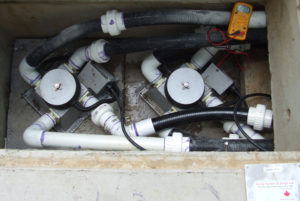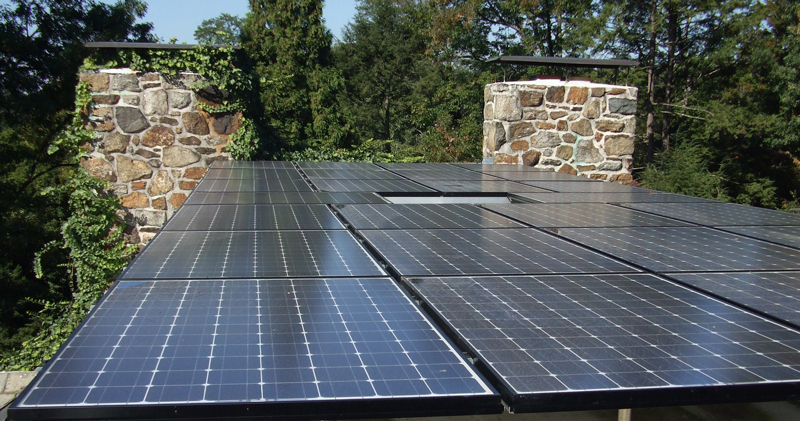Welkinweir is committed to demonstrating sustainable land and building practices. Our current sustainable technologies have helped us to decrease our footprint, conserve energy, capture and optimize rainwater use, and improve habitat for visiting and resident wildlife.

Welkinweir’s micro-hydro system, above, harnesses hydropower from the Great Pond to produce renewable energy.
Solar and Micro-hydro Power
Green Valleys Watershed Association’s sustainable energy initiative demonstrates that older buildings, such as our Estate House, can become sustainable designs. We have reduced our overall carbon footprint by 85% in eleven years through a variety of approaches: the historic Estate House now features a micro-grid fully capable of operating independently from the power grid, indefinitely, through a combination of integrated solar photovoltaic panels and a micro-hydro system attached to the Great Pond. The initiative was funded by the Sustainable Development Fund, the Pennsylvania Department of Environmental Protection’s Energy Harvest, and the Pennsylvania Department of Community and Economic Development.
 Porous Paving Parking Lot and Bioretention Areas
Porous Paving Parking Lot and Bioretention Areas
Green Valleys Watershed Association installed a porous pavement visitor parking lot, coupled with adjoining bio-retention areas and infiltration trenches to capture and filter precipitation. While the main entry road is paved with conventional asphalt, the parking bays are porous pavement. Rain water and snowmelt is directed towards these bays, where it percolates into an underground storage bed that stores water and controls its release into the ground after storms.
Water that does not percolate fast enough into the subsurface storage bed flows into the two bio-retention areas between the parking bays and Prizer Road, uninhibited by curbs or gutters. Native wildflowers and grasses were planted in these basins to help purify runoff, which is often polluted from paved areas by brake dust, oil, and other vehicular contaminants. Native plants’ long roots not only absorb more pollutants than traditional turf grass, but they also soak in more water to reduce flooding. They also attract a wide variety of birds and pollinating insects that you can observe from the visitor pavilion adjacent to the parking lot.
This “Best Management Practice” contributes to GVWA’s goal of capturing all runoff on Welkinweir – even during severe storms!


 Porous Paving Parking Lot and Bioretention Areas
Porous Paving Parking Lot and Bioretention Areas